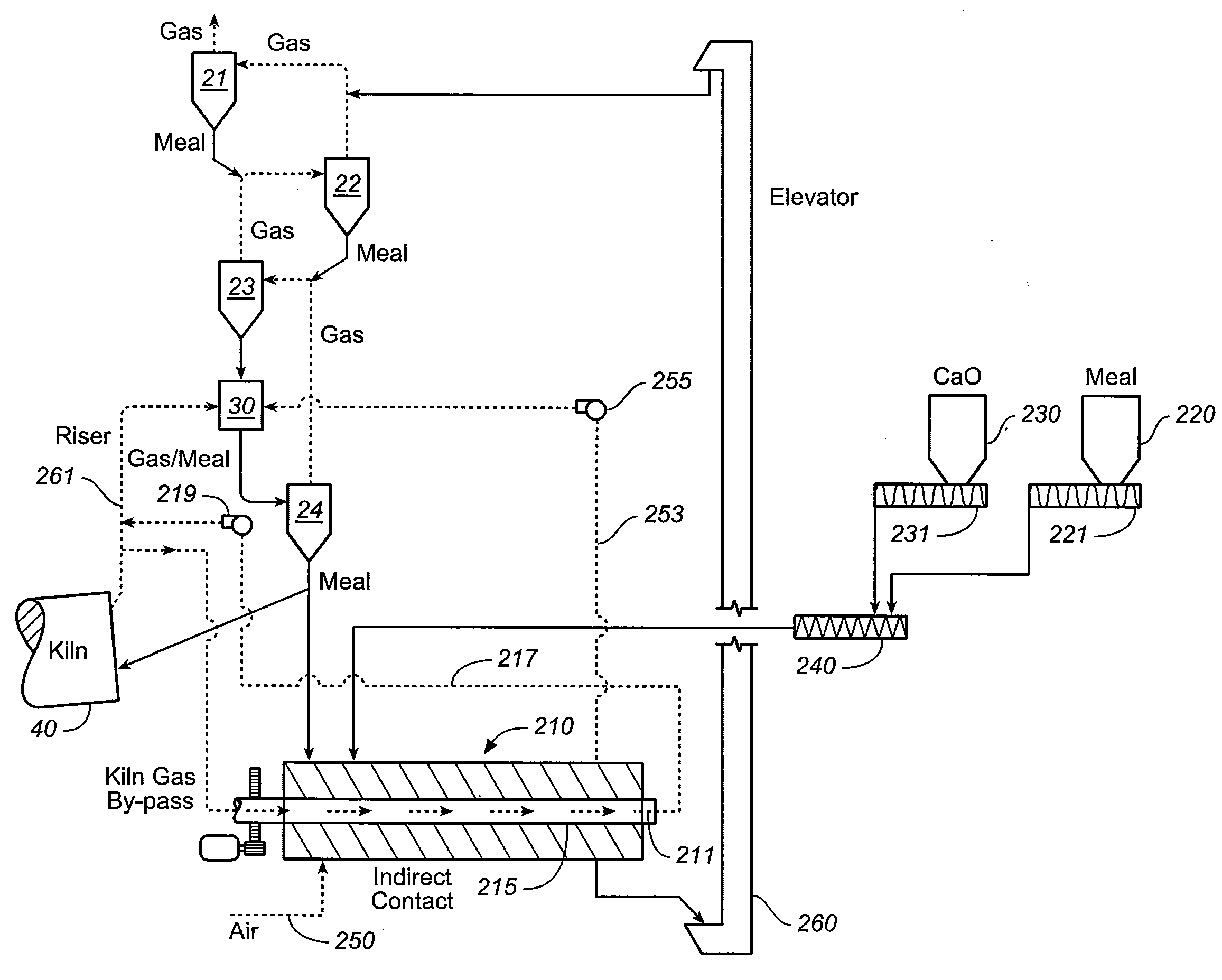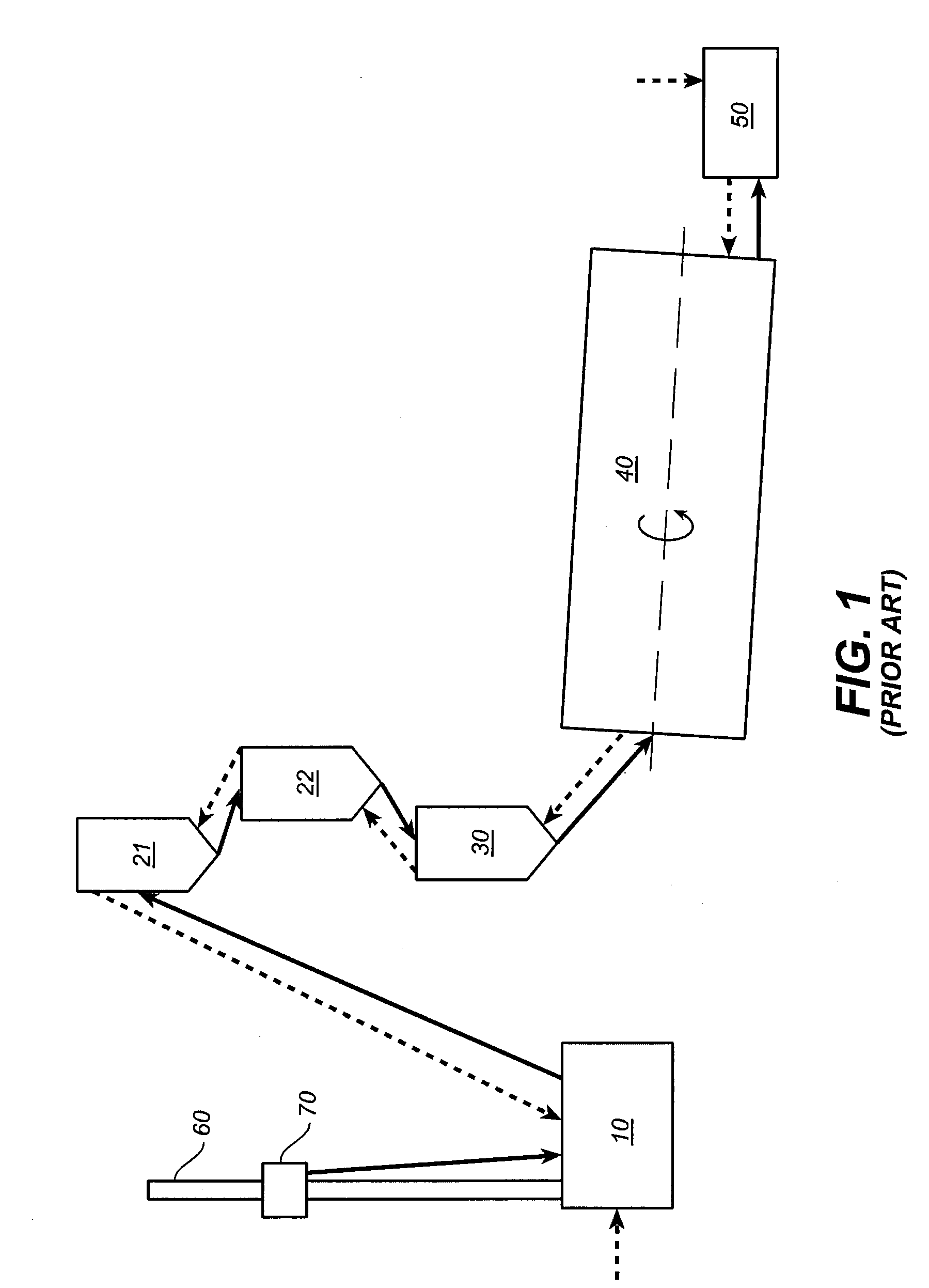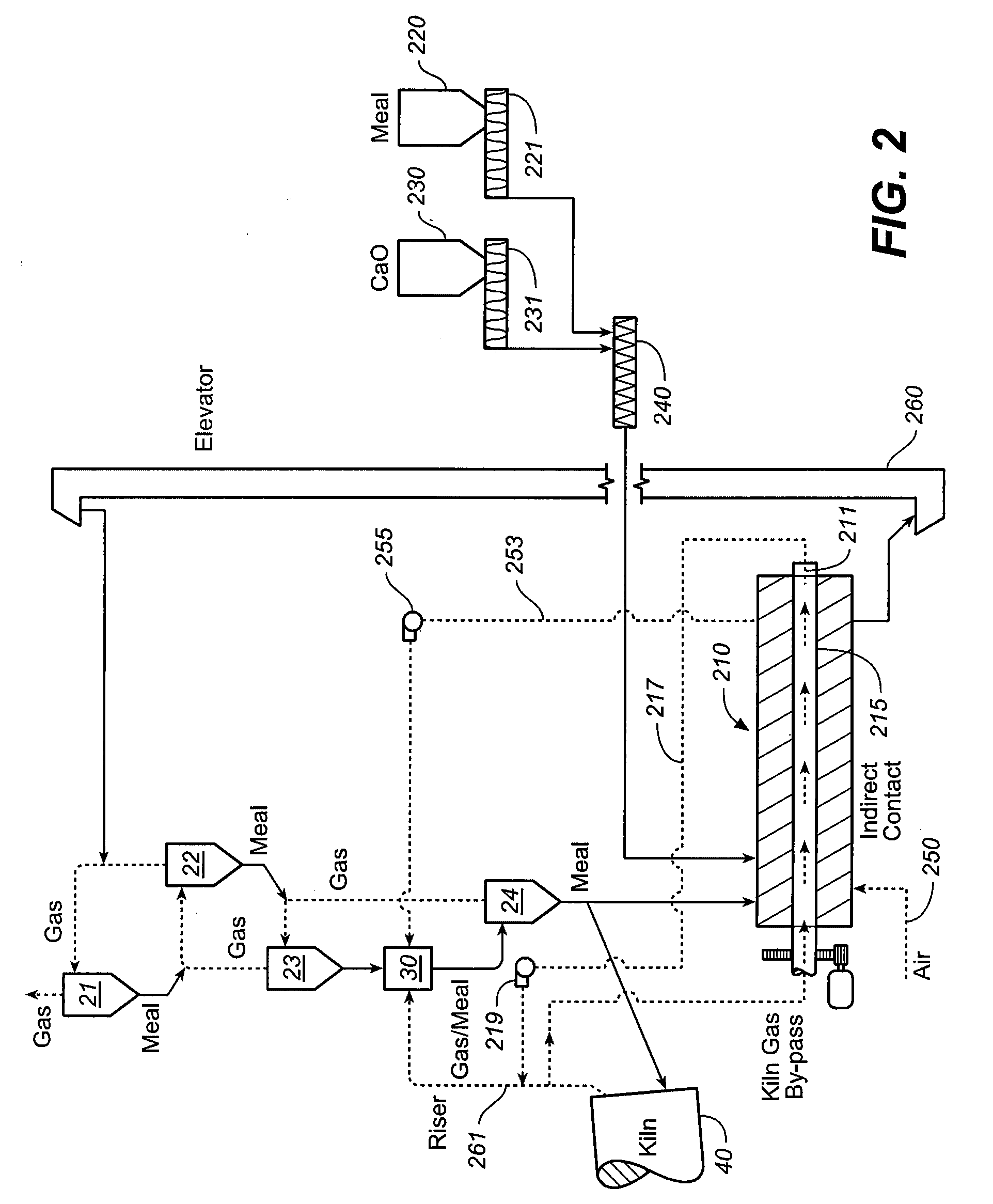Apparatus and method for controlling mercury pollution from a cement plant
a technology of cement plant and pollution control, applied in the direction of chemistry apparatus and processes, separation processes, dispersed particle separation, etc., can solve the problems of large fraction of mercury emitted unimpeded from existing air pollution equipment, approaches disclosed in prior patents that do not address specific problems, and mercury is a particularly toxic substance that is dangerous to humans at very low concentrations. to achieve the effect of reducing mercury emissions into the atmospher
- Summary
- Abstract
- Description
- Claims
- Application Information
AI Technical Summary
Benefits of technology
Problems solved by technology
Method used
Image
Examples
Embodiment Construction
[0025]In accordance with prior art, dry-process cement manufacturing, as exemplified schematically in the previously described FIG. 1, exhaust gases from kiln 40 are used to preheat and dry the feed meal before pyroprocessing. As the feed meal is heated impurities and other substances are volatilized forming various types of gaseous and aerosol pollutants which become entrained in the exhaust gas flow, and which may be released into the atmosphere. Because in the prior art layout of a cement plant, as depicted in FIG. 1, the exhaust gas flow is counter to the process flow, the volatilized compounds are not further heated or broken down prior to release. The nature and extent of the pollutants released from a facility, such as that which is depicted in FIG. 1, depends not only on the nature and impurity content of the raw materials that go into the feed meal, but on the temperatures used in the preheating towers. Unfortunately, efforts to minimize the creation of certain types of pol...
PUM
| Property | Measurement | Unit |
|---|---|---|
| temperature | aaaaa | aaaaa |
| temperature | aaaaa | aaaaa |
| temperature | aaaaa | aaaaa |
Abstract
Description
Claims
Application Information
 Login to View More
Login to View More - R&D
- Intellectual Property
- Life Sciences
- Materials
- Tech Scout
- Unparalleled Data Quality
- Higher Quality Content
- 60% Fewer Hallucinations
Browse by: Latest US Patents, China's latest patents, Technical Efficacy Thesaurus, Application Domain, Technology Topic, Popular Technical Reports.
© 2025 PatSnap. All rights reserved.Legal|Privacy policy|Modern Slavery Act Transparency Statement|Sitemap|About US| Contact US: help@patsnap.com



